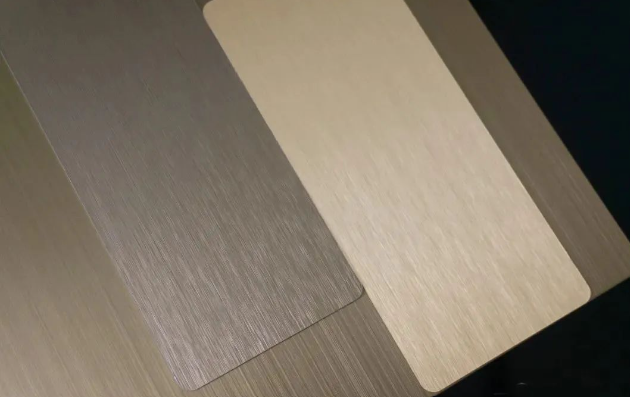Anodized aluminum is a surface treatment method that forms an oxide layer by controlling the surface oxidation reaction of aluminum. The following is the general production process for anodized aluminum:
1. Cleaning the surface of aluminum products: Thoroughly clean the surface of aluminum products to remove any oil, dirt, oxides, or other impurities. This can be achieved using alkaline solutions or other specialized cleaning agents.

2. Anode electrolysis tank: Hang aluminum products in the anode electrolysis tank, where there is a dilute acidic solution. This solution is usually an acidic oxidant such as sulfuric acid, oxalic acid, or phosphoric acid, as they can generate strong electrochemical reactions and generate aluminum oxides.

3. Applying voltage: Aluminum products coated with hard anodized coatings are placed as anodes (anode systems) in the electrolytic cell. The direct external power supply of the anode electrode is high-voltage, and the internal power supply is low-voltage. Direct current is input into the anode electrode through a current controller, forming an electric field between the anode electrode and the electrolyte of the oxidation cell. The metal material of the aluminum product itself becomes the anode, and the anodic oxidation coating is generated in this electric field.
4. Oxidation reaction: Applying direct current voltage in the anode electrolysis cell and placing the anode electrode system in a dilute solution of acidic oxidants such as sulfuric acid, oxalic acid, or phosphoric acid can create a deep and smooth oxidation coating that can only be formed in this environment. During this process, the oxide on the anode surface will generate oxide layers with different colors and textures, such as black or rainbow colors.
5. Sealing treatment: After anodizing, it is necessary to perform sealing cracking and form a sustainable protective layer on the surface of the oxide layer. Usually, this can be achieved using materials such as acetals, hot water, or steam.

6. Inspection and packaging: At the end of the production process, quality inspection of anodized aluminum is required to ensure that it meets the required standards and quality requirements. Finally, package and label aluminum products for transportation.
In summary, the production process of anodized aluminum can produce aluminum surface treatments with high hardness, corrosion resistance, and aesthetics, while also requiring strict adherence to manufacturing processes and technical specifications.


